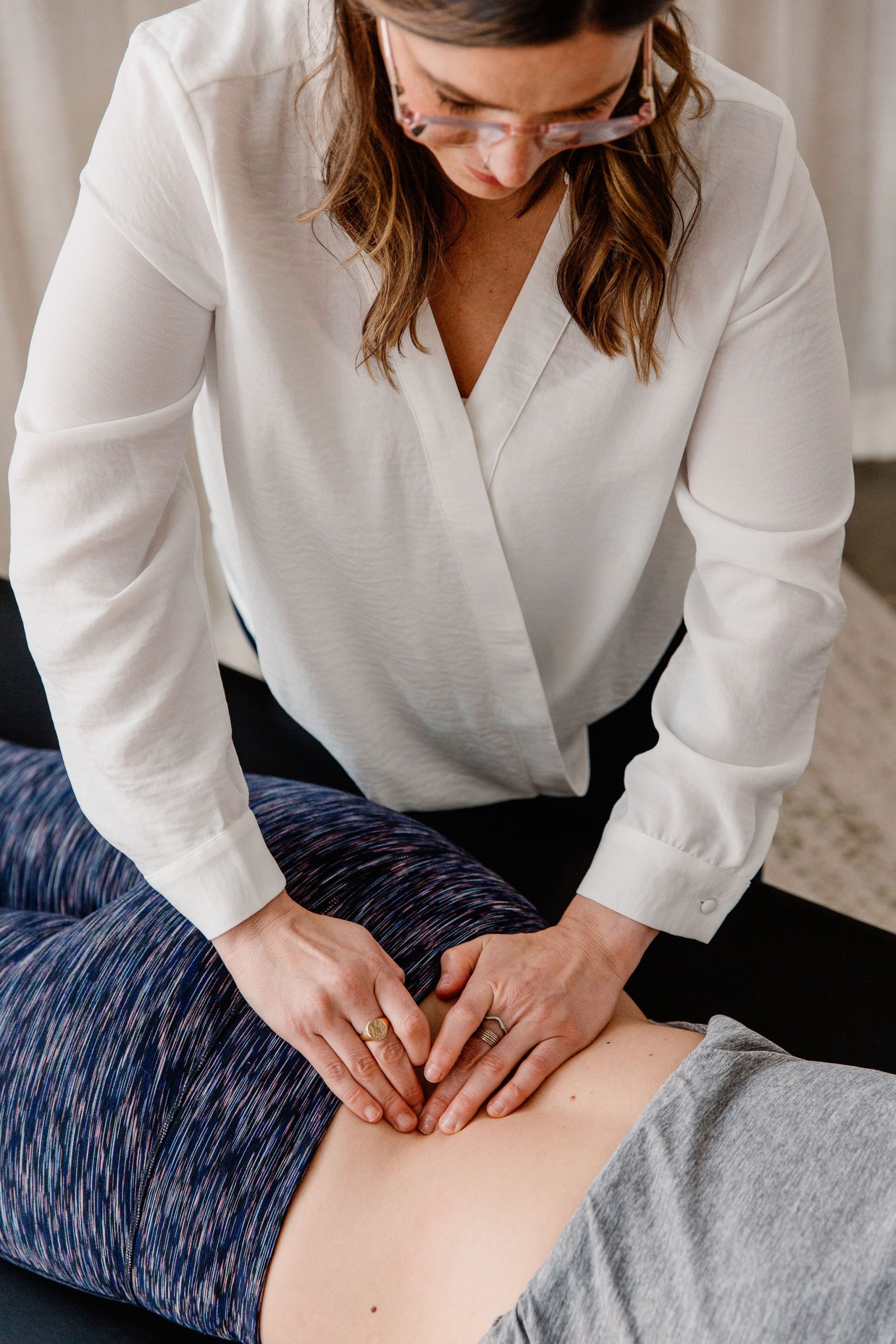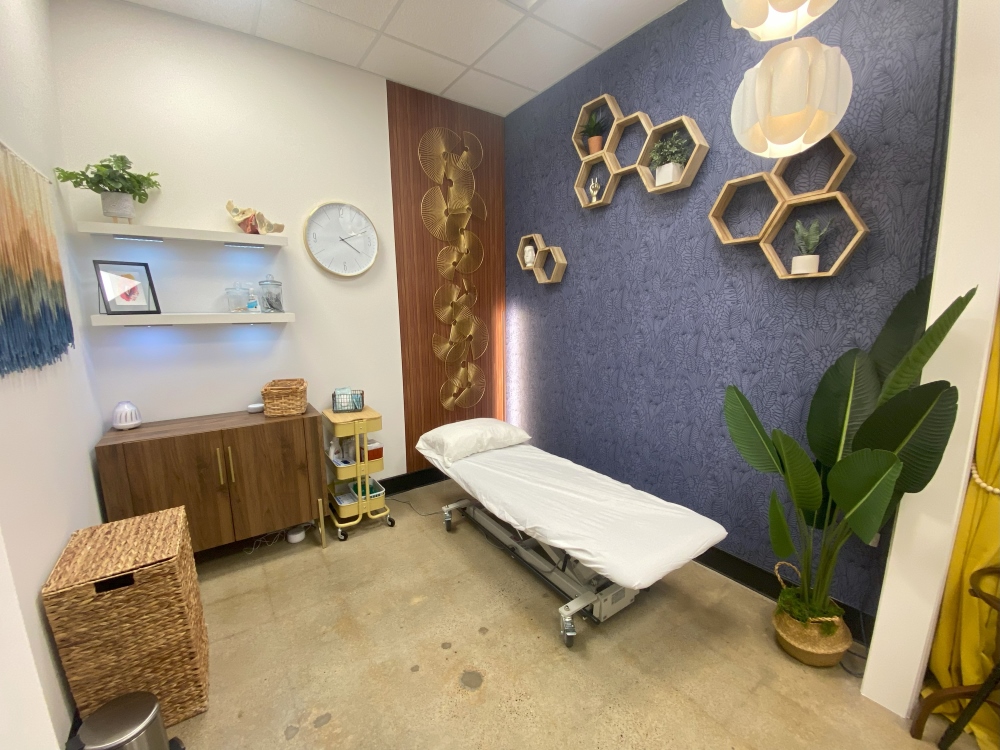
In-Person Pelvic Floor Physical Therapy
In-Person Pelvic Floor Physical Therapy
Pelvic floor physical therapy is exactly what it sounds like: physical therapy specifically for the pelvic floor and its surrounding structures!
The pelvic floor is a complex group of 26 muscles located in the pelvic region. They help support your body’s stability and your organs, as well as control a variety of important functions. This includes functions like sexual appreciation, urination, bowel movements, and more! But unfortunately, pelvic floor dysfunction is a very common experience for people of all ages and sexes.
Pelvic floor dysfunction can look like a lot of different things—constipation, incontinence, hemorrhoids, urinary urgency, sexual dysfunction, pelvic pain, and much, much more. Many people are surprised to find out that their pelvic floor plays a huge role in all of these different conditions!
However, because the pelvic floor is not usually the first thing people think of when these conditions arise, it often doesn’t get the attention it needs. In many cases, people consider these symptoms “normal” due to their age or other factors such as childbirth.
These conditions are actually not normal at all, and unfortunately won’t just go away on their own. Additionally, ignoring your symptoms can often worsen your situation.

Prioritize your health and wellness with a comprehensive pelvic floor physical therapy assessment and customized plan of care. No matter your type of pelvic floor dysfunction, condition or physical goals, Dr. Laura Meihofer will work with you to obtain optimal health through education and movement. In-person pelvic floor physical therapy sessions allow you to receive valuable one-on-one care and attention from an experienced pelvic floor therapist. Dr. Meihofer works hard to ensure all of her patients feel heard, and is determined to help you reach your health goals!
How In-Person Pelvic Floor Therapy Works
In-person pelvic floor physical therapy begins with a comprehensive initial evaluation, which includes collecting your medical history and a physical examination. A full physical exam involves an evaluation of your spine, pelvis, hips, abdomen and the musculature of your pelvic floor—both internally and externally. As a patient, you may consent to any level of examination; however, a full examination is strongly encouraged for the most comprehensive assessment and results. Rest assured that Dr. Meihofer will always respect your level of personal comfort!
After completing the initial evaluation, Dr. Laura Meihofer will share her assessment of your pelvic floor condition. Together, you will discuss your goals and craft a thorough pelvic floor physical therapy plan of care personalized to your unique needs, medical conditions, and comfort level. The plan of care often includes a combination of in-person physical therapy treatment and at-home care. You can also expect to receive a list of resources to help support your journey to pelvic floor health.
In-person physical therapy is provided in 60-minute sessions, which include treatments such as neuromuscular reeducation, manual therapy, therapeutic activity, therapeutic exercises, and more.
The timeline and number of sessions needed greatly depends on your unique case, so you can expect to discuss these with Dr. Meihofer during your evaluation! However, please note that the number of sessions needed for your condition may change as you progress, and highly depends on your level of consistency with at-home care.
Pelvic floor dysfunction symptoms typically improve with a varying number of weeks and sometimes months of pelvic floor therapy sessions, combined with consistent at-home self-care. Your level of devotion to adopting daily life adjustments and self-care programs recommended by your pelvic floor therapist directly affect your progress and long term results.
In addition to the treatments and activities you’ll experience at your in-person pelvic floor physical therapy sessions, you should also expect to continue practicing at home. Your pelvic floor therapist will build an exercise prescription customized to your condition and capabilities. Whether the goal is to alleviate pain, strengthen muscles, stretch tight muscles, support surgery recovery, or a combination of these, your personalized exercise prescription is an essential component to achieving pelvic floor health.
Your therapist will walk you through this exercise program during your physical therapy sessions. Continuing this exercise program on a consistent basis at home will be key to your improvement.
The difficulty level of this exercise program will be increased as you progress. Physical improvements can take weeks or even months—dedication and determination are essential to seeing positive results!
Light workout equipment may be incorporated into your program, including resistance bands, free weights, and kettlebells. There are many options to choose from, but Dr. Laura Meihofer has extensive experience and knows which products work and are actually worth their value. She will provide you with a list of affordable, proven products she believes in for your at-home pelvic floor therapy program.

In-person pelvic floor physical therapy appointments are available in two locations for Minnesota residents. Get started by scheduling a consultation today!
Not a Minnesota resident? Learn about Dr. Laura Meihofer’s telehealth services and the intensive pelvic floor physical therapy program.
Dr. Laura Meihofer is an out-of-network provider and does not accept insurance, including Medicaid or Medicare. You are responsible for full payment at the time of services. Documentation for out-of-network insurance benefits will be provided upon request. Learn more about out-of-network providers.
You can learn more about pelvic floor therapy and Dr. Laura Meihofer before making an appointment! Feel free to check out the following resources:
FAQs About In-Person Pelvic Floor Physical Therapy
IS PELVIC FLOOR THERAPY REALLY RIGHT FOR ME?
Pelvic floor physical therapy can be an incredibly effective form of treatment for many different patients. If you haven’t tried physical therapy before and are trying to decide if it will work for your condition, ask yourself if you have experienced any of the following:
- Frequent urination, leakage (even a drop) from coughing, sneezing, or laughing, being unable to defer the urge to urinate, or experiencing leakage after emptying your bladder
- Straining, constipation, or the leakage of gas or stool
- The sensation of pressure or as though something is falling out
- Sexual activities such as: problems with arousal, painful intercourse, or the inability to orgasm
- Back or hip pain, especially pain that doesn’t dissipate with standard physical therapy, chiropractic care, or exercise
If you answer “yes” to even one of these questions, you can definitely benefit from pelvic floor therapy!
WHAT CONDITIONS DOES DR. MEIHOFER TREAT?
Dr. Meihofer is experienced in a wide variety of treatments. She has years of training and patient care under her belt, so she’s seen it all! For example, many of the conditions she has seen includes, but is not limited to:
- Bladder conditions
- Bowel conditions
- Pelvic pain conditions
- Conditions of the back, hip, and core
- Sexual dysfunctions
- Surgery rehabilitation and preparation
- Pregnancy preparation
- Postpartum recovery care
- And much more!
If you are still unsure, feel free to schedule a discovery call to have your condition-related questions answered.
WHAT IS THE FIRST APPOINTMENT LIKE?
Before your first appointment, you will fill out some intake forms. When you arrive for your appointment, Dr. Meihofer will briefly discuss these forms with you, and then perform a physical evaluation with your consent. This involves an assessment of posture, abdominal health, breathing patterns, and overall pelvic floor health. After your evaluation, Dr. Meihofer will work with you and your availability to curate a plan of care to address your needs, utilizing a variety of different treatment options.
I’VE FAILED PELVIC FLOOR THERAPY, HOW WILL THIS BE ANY DIFFERENT?
Success with pelvic floor therapy can depend on a variety of different factors. If you have failed once before, don’t give up!
Every provider is different. Although you may have worked with a different physical therapist in the past, you may have a completely different experience with Dr. Meihofer.
Not only is she very experienced and highly trained with a variety of different conditions, but she also takes a very holistic approach to her treatment. Dr. Meihofer considers many outside factors that can contribute to your health, and is able to curate your treatment to your needs and progress. She also provides a lot of education and resources that will allow you to continue pursuing your health goals at home.
Additionally, Dr. Meihofer sees many patients who have previously “failed.” She is often the second or even third provider that many people see. Because Dr. Meihofer runs her own private practice, she is not restricted by obstacles that other providers may face (time limits, visit limits, treatment limits, etc.). Therefore, these patients often find a lot of success with Dr. Meihofer!
If you are still unsure, no worries! Dr. Meihofer provides services such as the free discovery call or the movement screen for those who would like to learn more about her practice first.
AM I REQUIRED TO RECEIVE AN INTERNAL EXAM?
No! Although internal exams are highly suggested for patients, they are definitely not required. Dr. Meihofer is committed to creating a comfortable environment for her patients. Therefore, if you have a strong aversion to internal exams, Dr. Meihofer will do her best to tend to your symptoms with other treatment methods.
However, it may help to understand why internal exams are useful for the professional. Internal exams allow your provider to get an in-depth understanding of your individual case and pelvic floor health. Every person’s body and needs are different—an internal exam will allow your provider to identify tightness, weakness, or other possible issues with your pelvic floor, which will allow treatment to be better curated to your needs.
Rest assured that Dr. Meihofer is very experienced and highly trained for internal exams. She will also always request consent before performing any exam or treatment, and you have the freedom to accept or deny. Even if you accept at first, you are free to stop the service at any time. You are in control, and Dr. Meihofer will always respect your decision to protect your personal comfort!






